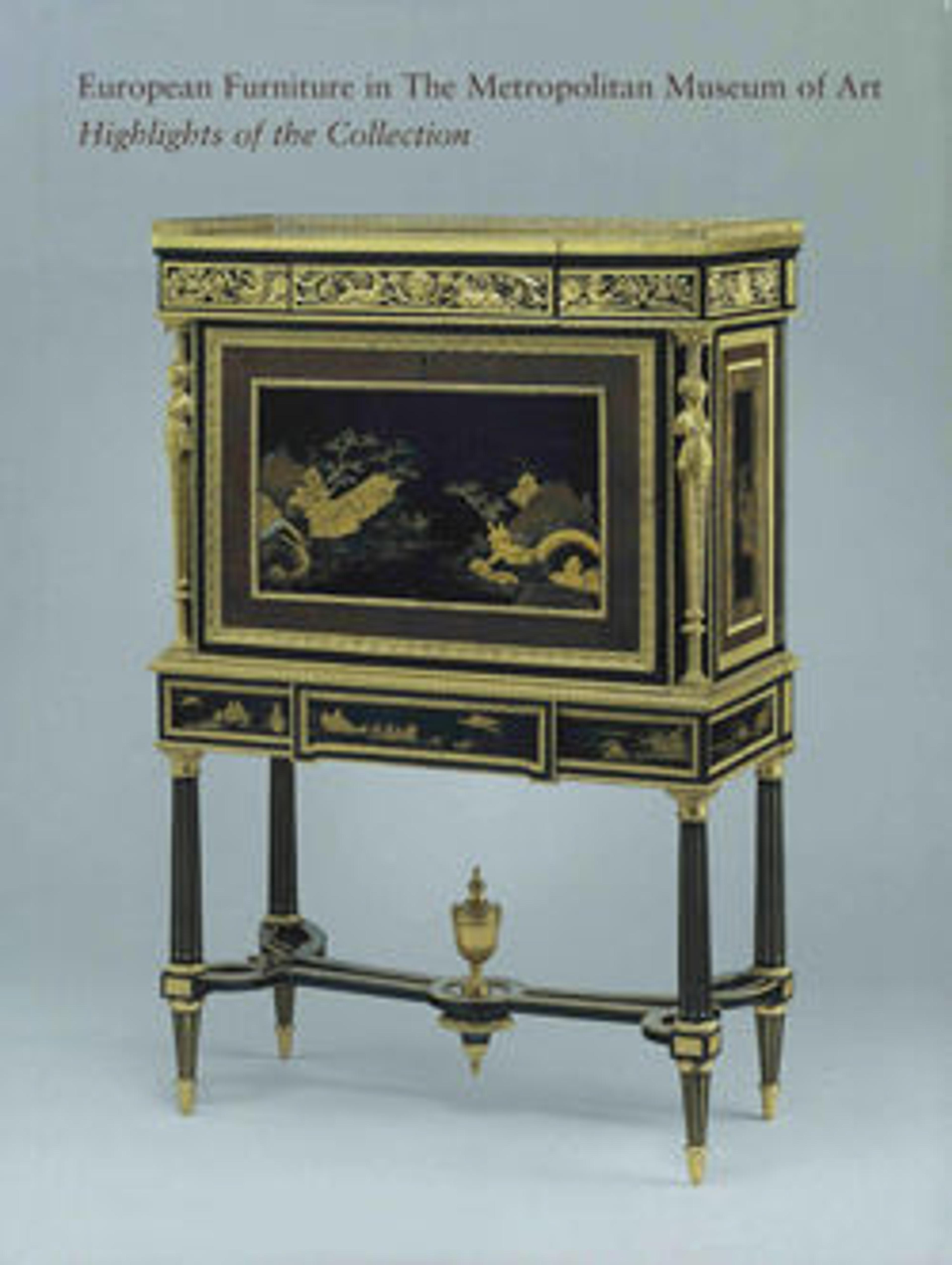Commode
This commode is attributed to William Ince and John Mayhew, who jointly ran one of the most successful cabinetmaking firms in eighteenth-century London. Ince offered design expertise, while Mayhew managed business affairs; the pair also worked closely with carvers, gilders, and other specialists across their workshops.
Ince and Mayhew were renowned for their innovative use of marquetry—a technique in which pieces of wood are veneered or inlaid into furniture to form designs. Commodes decorated with a single large marquetry panel on the front are rare in English furniture of this period. Access to the interior is gained not by this panel, but by two doors at the sides, each of which conceals four mahogany drawers.
The mounts and moldings of this commode, including the stylized rams, have been attributed to Matthew Boulton, celebrated for his work in gilt bronze.
Ince and Mayhew were renowned for their innovative use of marquetry—a technique in which pieces of wood are veneered or inlaid into furniture to form designs. Commodes decorated with a single large marquetry panel on the front are rare in English furniture of this period. Access to the interior is gained not by this panel, but by two doors at the sides, each of which conceals four mahogany drawers.
The mounts and moldings of this commode, including the stylized rams, have been attributed to Matthew Boulton, celebrated for his work in gilt bronze.
Artwork Details
- Title:Commode
- Maker:Attributed to John Mayhew (British, 1736–1811)
- Maker:Attributed to William Ince (British, active ca. 1758/59–1794, died 1804)
- Date:ca. 1770
- Culture:British
- Medium:Pine carcase, veneered with satinwood, kingwood, holly, rosewood and other woods; gilt-bronze mounts; Siena marble slab
- Dimensions:Overall: 38 × 54 × 28 in. (96.5 × 137.2 × 71.1 cm)
- Classification:Woodwork-Furniture
- Credit Line:Gift of Irwin Untermyer, 1964
- Object Number:64.101.1145
- Curatorial Department: European Sculpture and Decorative Arts
More Artwork
Research Resources
The Met provides unparalleled resources for research and welcomes an international community of students and scholars. The Met's Open Access API is where creators and researchers can connect to the The Met collection. Open Access data and public domain images are available for unrestricted commercial and noncommercial use without permission or fee.
To request images under copyright and other restrictions, please use this Image Request form.
Feedback
We continue to research and examine historical and cultural context for objects in The Met collection. If you have comments or questions about this object record, please contact us using the form below. The Museum looks forward to receiving your comments.
